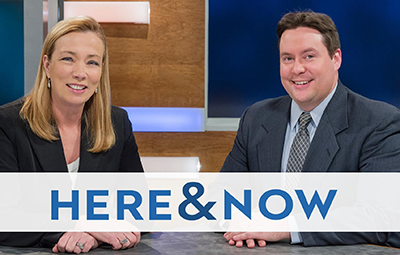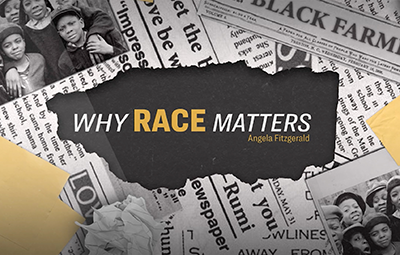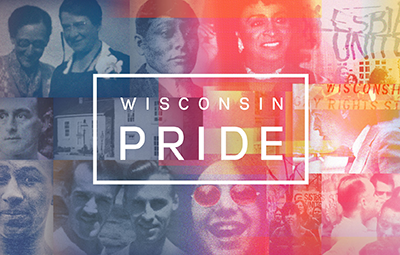Frederica Freyberg:
In economic news, being hungry and not knowing where your next meal is coming from is the definition of food insecurity. Across Wisconsin, food pantries are seeing a major uptick in demand over the past year. In some counties, triple digit increases, and it turns out college students experience food insecurity at higher rates than the general population, with estimates putting students between 33 to 51% food insecure compared to all U.S. adults at 9.8%. At Northwood Technical College in Rice Lake, students are experiencing food insecurity and now some help. We turn to the college’s President John Will. Thanks very much for being here.
John Will:
Glad to be here. Thank you.
Frederica Freyberg:
What do you see on your campuses in terms of food insecurity?
John Will:
We actually have some data from 2015. We did a study with the Hope Lab and then a follow-up bit of research that showed that about 45% of our students were identifying an issue with food insecurity and so that’s the data that we’re relying on and then we also know that research shows that food insecurity is a barrier to completion in college. And so we felt like we needed to take some action. Actually, in about 2019, had one of our managers of enrollment services put together a plan to create a food pantry. 2019 was a pretty busy year. You may remember a lot of things started to happen in 2019. And so we didn’t implement that at that time but recently we were able to come up with a plan to start a food pantry at our Rice Lake campus.
Frederica Freyberg:
So how hard is it to see that food insecurity amongst your students?
John Will:
Well, it’s not very hard — we have a lot of students who — there’s a lot of data points that you can look at. We have many students who receive Pell grants, which is the need based federal grant program, and so we know we have students who are in need. Some who are in poverty. We also have students who are supporting families. Many of them work part time and can’t work full time because they’re going to school. They made that really important decision to try. They’re trying to go to school to get more education to provide a better life for them and their families, but it’s a struggle financially and, of course, food is one of the basic things that they need to purchase and so that’s something that’s a barrier to them being successful, not only for them, but for their family. And so given our connection with them, a food pantry seemed like a great way to help them overcome that barrier.
Frederica Freyberg:
So what kind of help did you get to run that food pantry, then?
John Will:
This is a really good story. Technical colleges have been receiving private support I think in larger numbers in the last — I’ve been president for 10 years and we’ve seen much more willingness to receive private support. And at our college, we received $100,000 anonymous donation, still do not know who provided the funding, and the only directive was to direct it towards something that would help our students. And so we have four campuses and each of them has a leadership team. That leadership team got together, identified this as the place where the endowment that that money established would be the most impactful, and so they used it as sort of seed money to get the food pantry going. We’re calling it Blazes Covered. Blaze is our mascot and that was a good way to brand it and make it into a positive thing for our students and happy to say that it has seen a successful launch.
Frederica Freyberg:
I was going to ask, what kind of demand are you seeing for that pantry?
John Will:
It’s a little bit early to look at numbers or volume, but we definitely see students accessing it and I should mention, it’s like a lot of food pantries, stocked with nonperishable food items and even hygiene items for folks, because those are some of the basic kind of needs that people who are struggling with financial issues see and it’s anonymous. You walk in and can take what you need and then walk out. So we know there’s enough activity to need to restock it periodically, but we’ll evaluate that more towards the end of the academic year here.
Frederica Freyberg:
You said your baseline started in kind of 2015 when you did that research about the numbers of students who might be food insecure. Is it your sense that it’s gotten worse with the cost of food now and the cost of housing?
John Will:
I think that’s maybe a little bit anecdotal, but I do think a lot of people are struggling with some of those basic — sort of those costs that relate to necessities and we’ve seen that increase. It’s reflected in a couple of different ways. We see students going more part time. That’s starting to turn around a little bit this year, but on the heels of the pandemic, we saw a greater percentage of students going part time and that’s often so that they can hold down more hours, and so we’re starting to see that turn around a little bit now, but that’s definitely — that’s definitely been something that we’ve noticed and wanted to try to proactively address and alleviate.
Frederica Freyberg:
So when you receive the $100,000 gift, was it ever a question but that helping students who are hungry was the first priority?
John Will:
Well, we’ve got a lot of great things that we can use funding for, but that’s a pretty basic need for everybody and managing the logistics of a food pantry takes not only initial seed money but a commitment from our existing employees on campus and so once we worked that out, I think that was a pretty easy decision.
Frederica Freyberg:
All right. John Will, thanks very much.
John Will:
Thank you.
Search Episodes

Donate to sign up. Activate and sign in to Passport. It's that easy to help PBS Wisconsin serve your community through media that educates, inspires, and entertains.
Make your membership gift today
Only for new users: Activate Passport using your code or email address
Already a member?
Look up my account
Need some help? Go to FAQ or visit PBS Passport Help
Need help accessing PBS Wisconsin anywhere?

Online Access | Platform & Device Access | Cable or Satellite Access | Over-The-Air Access
Visit Access Guide
Need help accessing PBS Wisconsin anywhere?

Visit Our
Live TV Access Guide
Online AccessPlatform & Device Access
Cable or Satellite Access
Over-The-Air Access
Visit Access Guide
 Passport
Passport






Follow Us